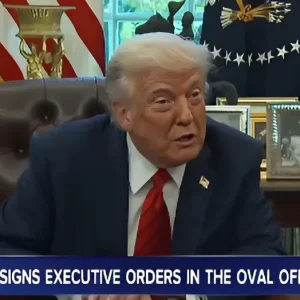TARIFF WAR BETWEEN US AND CHINA, NO MATTER WHO WINS, WE ARE STILL THE MOST VULNERABLE. DO YOU AGREE?

The ongoing tariff war between the United States and China has become one of the defining features of global economic tension in recent years. While both governments claim to be defending their national interests and protecting their domestic industries, many ordinary people find themselves caught in the crossfire. From rising prices on everyday goods to uncertainty in the job market and investments, it is becoming increasingly clear that no matter which nation claims victory in this prolonged economic battle, it is average citizens—consumers, small business owners, and workers—who are bearing the heaviest burden.
The trade war officially began in 2018 when the U.S. imposed tariffs on Chinese imports, citing unfair trade practices and intellectual property theft. China retaliated with its own tariffs on American goods, setting off a chain reaction of tit-for-tat measures that has affected hundreds of billions of dollars in trade. While the goal on the U.S. side was to encourage American companies to bring manufacturing back home and reduce reliance on Chinese supply chains, the results have been mixed at best.
One of the most immediate and noticeable impacts has been the rise in consumer prices. When tariffs are imposed, the added costs often get passed down the line to the end user. That means families paying more for electronics, clothing, furniture, and even groceries. While large corporations can often absorb some of the increased costs or shift their production strategies, small businesses and consumers don’t have the same flexibility. For many, these price hikes have strained household budgets and limited spending power, especially during times of inflation or economic instability.
The trade war has also affected American farmers and manufacturers. When China placed tariffs on U.S. agricultural products in retaliation, many farmers lost access to one of their largest export markets. Despite efforts by the federal government to offer subsidies to offset losses, the damage was significant and, in some cases, long-lasting. Similarly, manufacturers dependent on parts or raw materials from China faced delays and increased costs, making it harder to compete both domestically and internationally.
In China, the impacts have been felt as well, particularly among exporters who rely heavily on the U.S. market. Jobs have been lost in certain sectors, and economic growth has slowed at various points throughout the dispute. Still, with China’s tightly controlled political and economic systems, the government has more direct control over how pain is distributed within its economy. That makes the Chinese population somewhat insulated from the consequences—though certainly not immune.
But the most concerning issue may be the long-term effects of uncertainty. Businesses hate unpredictability, and the volatile nature of U.S.-China relations has made it difficult for companies to make confident long-term decisions. Should they invest in American factories? Move operations to Vietnam or India? Hold off on expansion altogether? This kind of economic hesitation trickles down, leading to slower job growth and reduced innovation.
For average citizens in both countries, the rhetoric of victory rings hollow when they are the ones paying the price. The U.S. government may tout a reduction in the trade deficit or an increase in domestic production, but those gains mean little if they come alongside a higher cost of living and economic anxiety. Likewise, China’s claims of resilience don’t soothe the worries of workers facing wage stagnation or job displacement due to shrinking global demand.
Ultimately, the tariff war highlights the interconnectedness of the modern global economy. In a world where products are designed in one country, assembled in another, and sold in a third, the old models of economic nationalism are becoming increasingly outdated. Policies designed to punish foreign nations often circle back to hurt the very people they were intended to protect.
So, do we agree that no matter who wins the U.S.-China tariff war, the most vulnerable remain the everyday people? The evidence strongly points to yes. Governments may posture, industries may adapt, but it is the ordinary consumer—trying to put food on the table, keep a job, and afford basic necessities—who feels the real consequences. In the end, while nations play chess on the global economic board, it is the people who are used as pawns.






